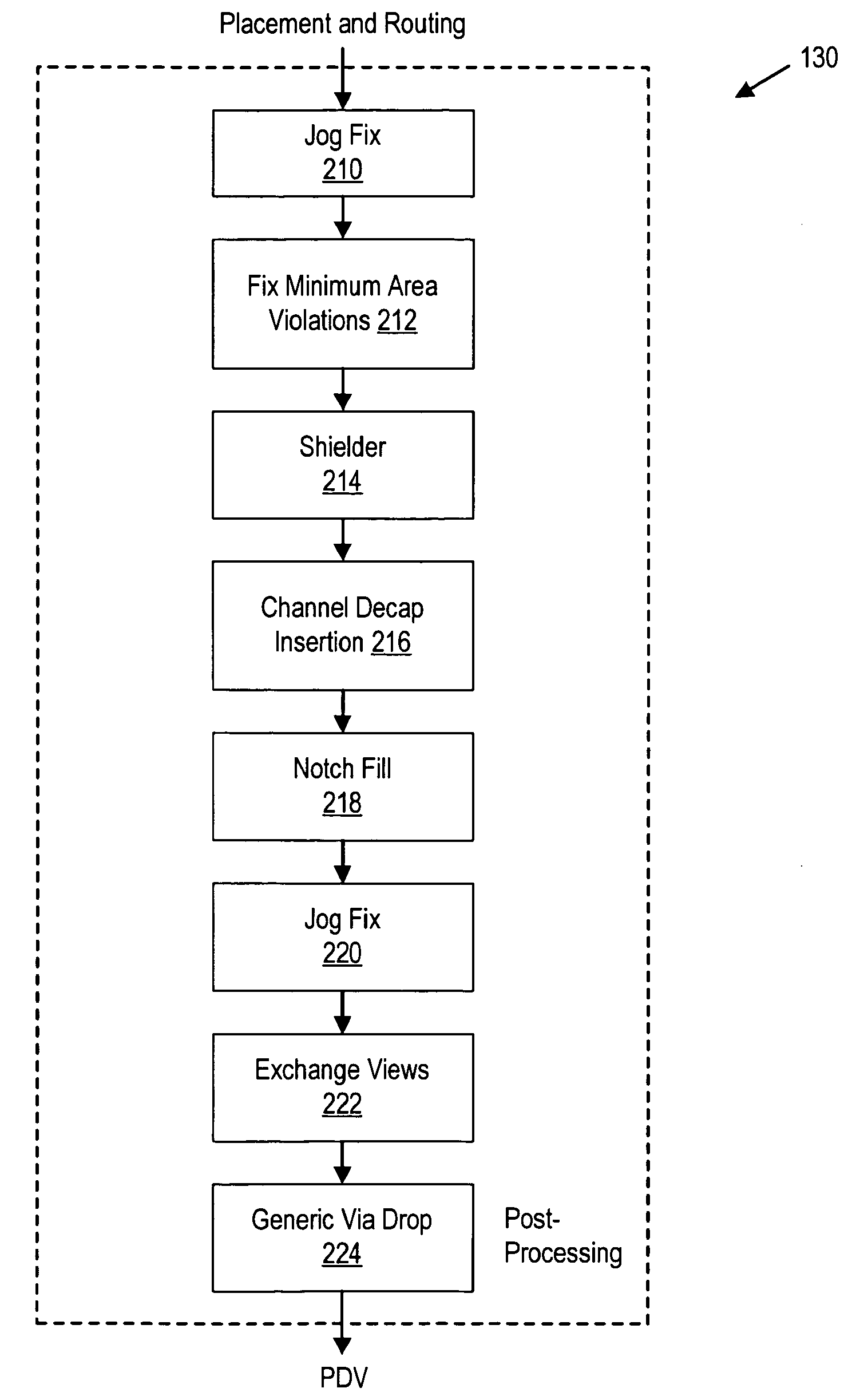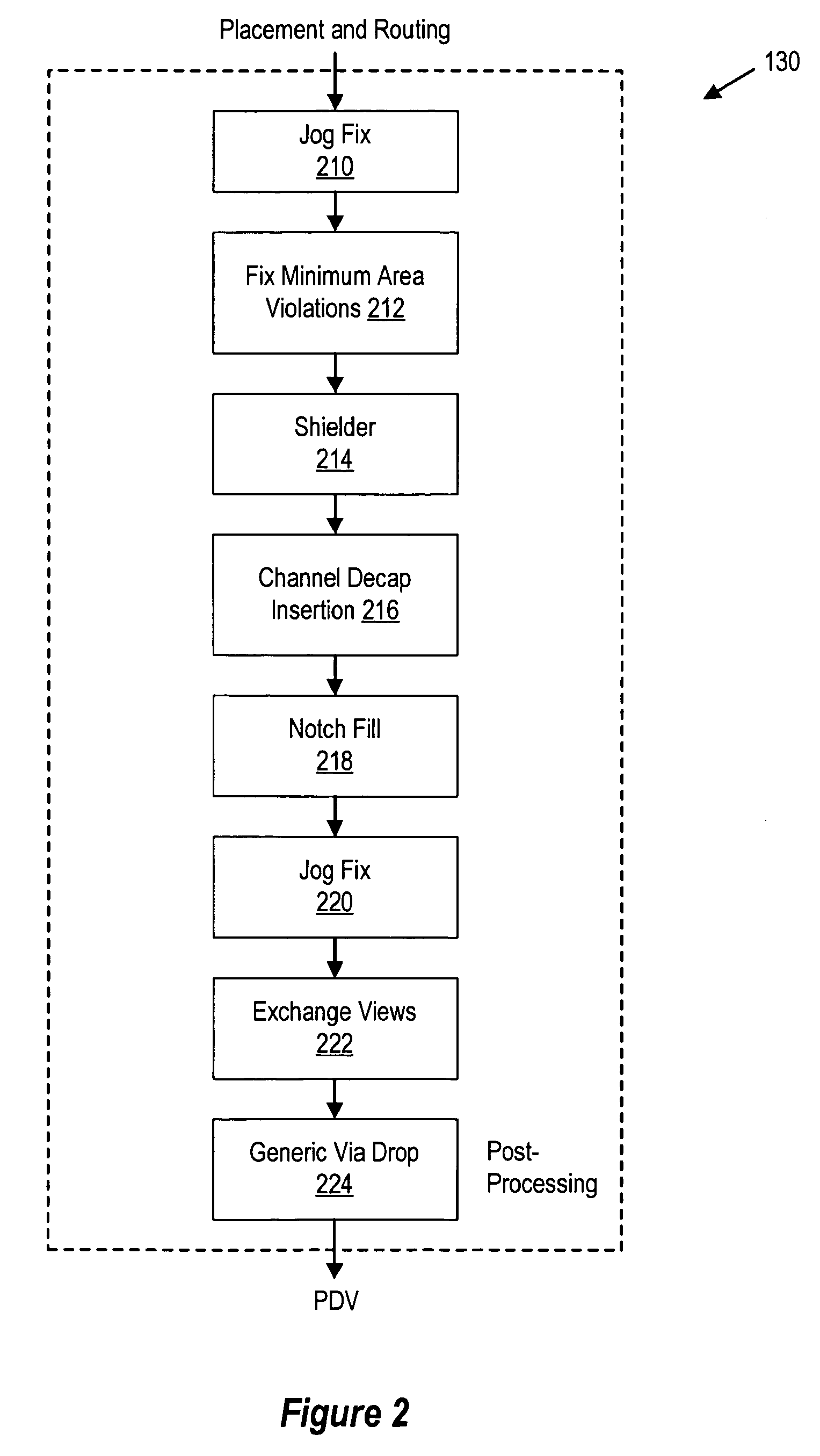Integrated circuit binning and layout design system
a layout design and integrated circuit technology, applied in the direction of cad circuit design, program control, instruments, etc., can solve the problems of not allowing the prediction of cross-coupling (i.e., noise) between wire paths and propagation delays (i.e. timing), known routing tools are often blind to the power distribution requirements of the design, and tools often do not allow alternate assignmen
- Summary
- Abstract
- Description
- Claims
- Application Information
AI Technical Summary
Benefits of technology
Problems solved by technology
Method used
Image
Examples
Embodiment Construction
[0025]Referring to FIG. 1, the operation of a system 100 for generating a correct by construction layout is shown. The system 100 starts by defining design constraints to be used within the binning and layout methodology at step 110. Next, the system places routing of an integrated circuit design using the binning and layout design constraints at step 120. After the binning and layout design is completed, the system performs a post processing operation on the binning and layout design at step 130. After the post processing operation is completed, a final design is provided by the system 100 at step 140.
[0026]Referring to FIG. 2, a flow chart of the operation of a layout post processing module 130 is shown. More specifically, once a top level layout is substantially completely routed (and repeater inserted where applicable), the layout post processing (LPP) flow is executed to assure that a design complies with various design rules, EM / IR constraints, and noise constraints. The LPP f...
PUM
 Login to View More
Login to View More Abstract
Description
Claims
Application Information
 Login to View More
Login to View More - R&D
- Intellectual Property
- Life Sciences
- Materials
- Tech Scout
- Unparalleled Data Quality
- Higher Quality Content
- 60% Fewer Hallucinations
Browse by: Latest US Patents, China's latest patents, Technical Efficacy Thesaurus, Application Domain, Technology Topic, Popular Technical Reports.
© 2025 PatSnap. All rights reserved.Legal|Privacy policy|Modern Slavery Act Transparency Statement|Sitemap|About US| Contact US: help@patsnap.com



